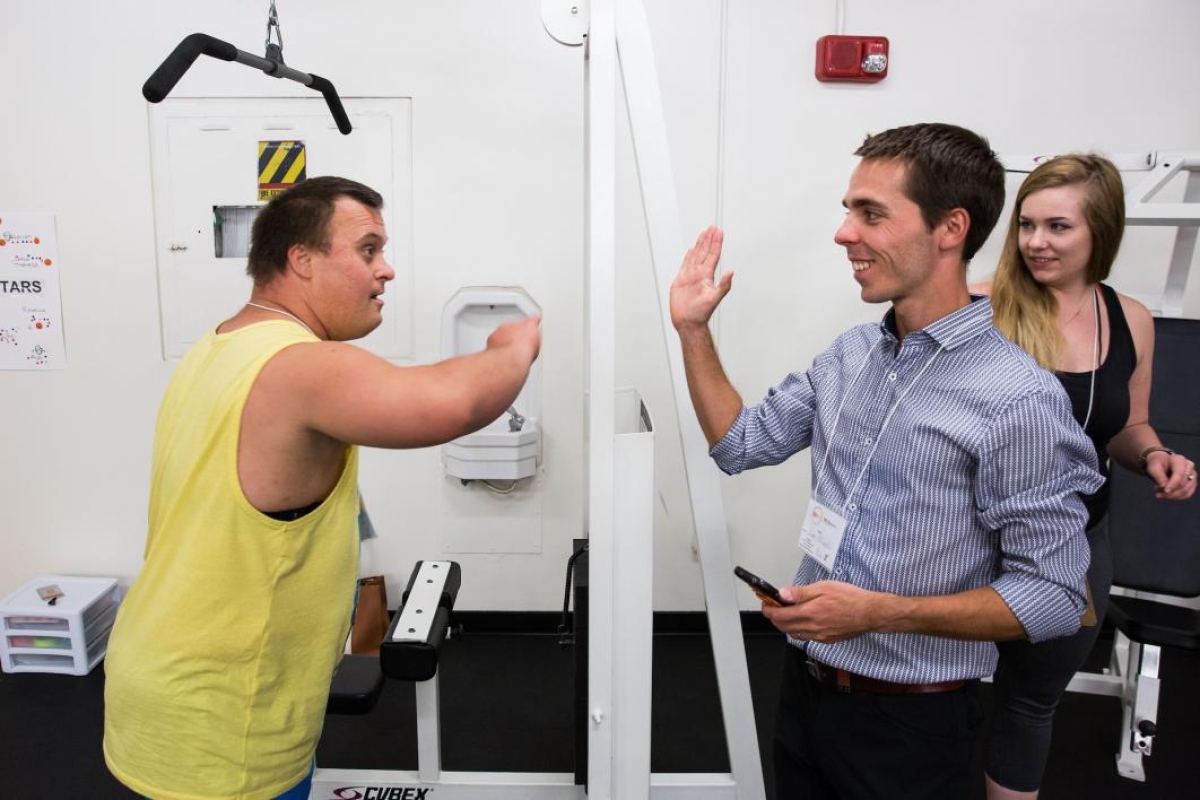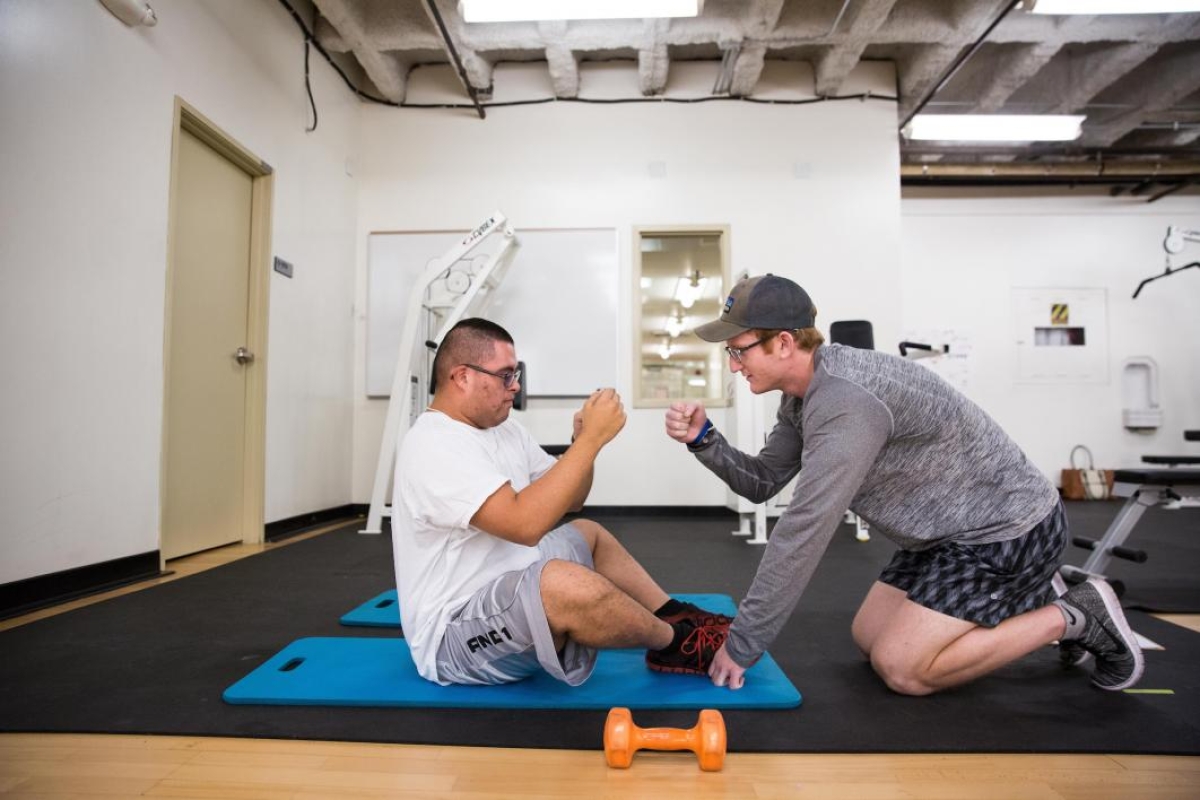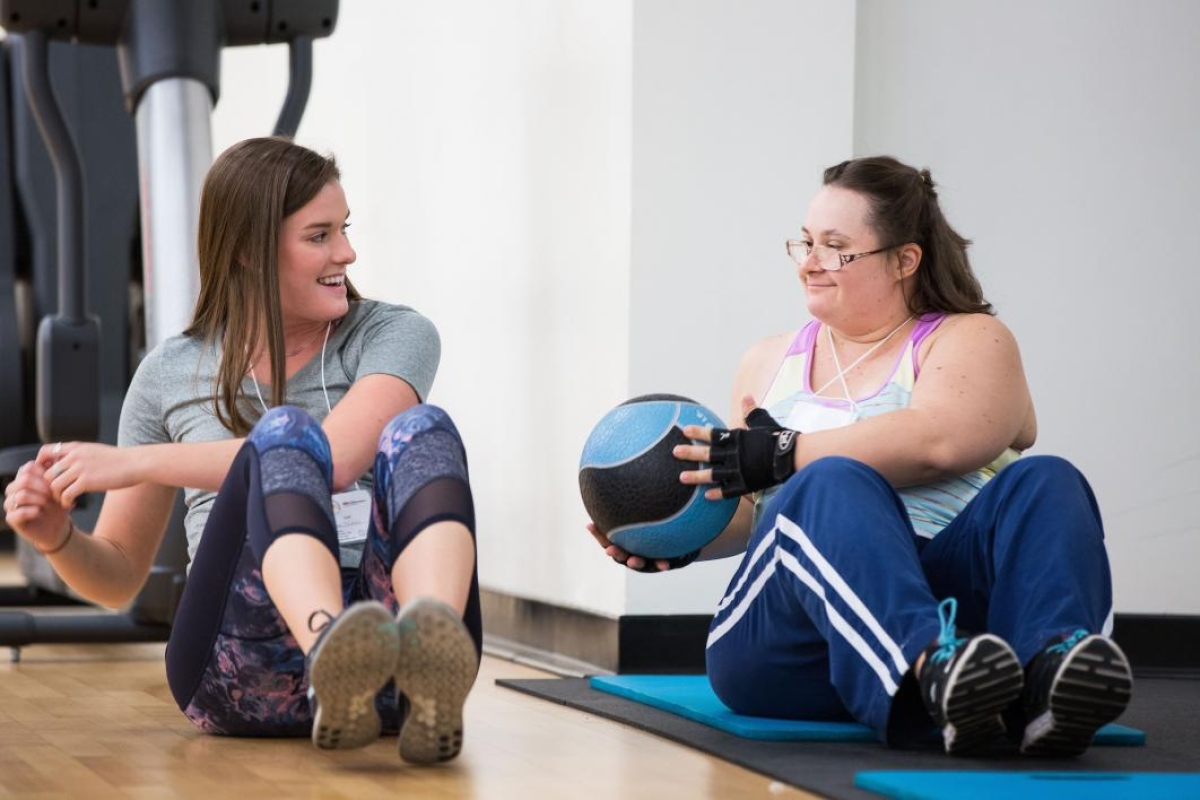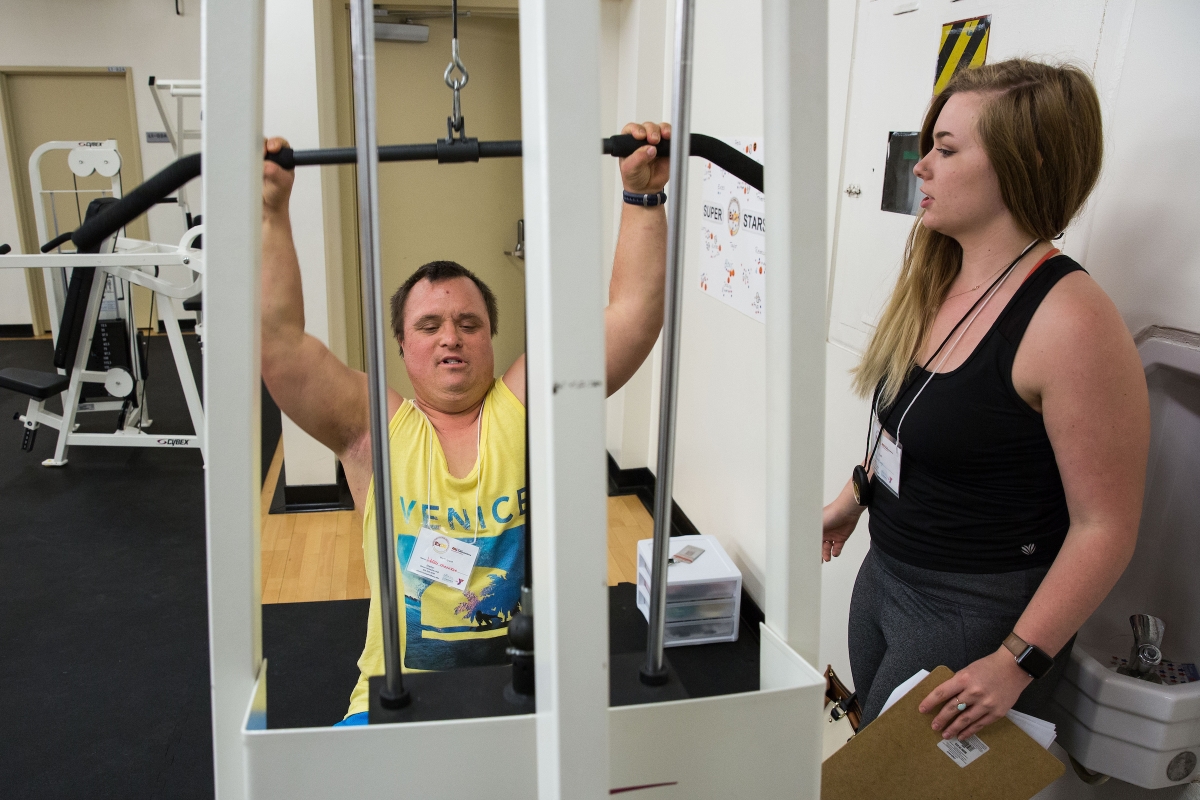ASU’s Down syndrome class is working out
Research, student training and community benefit collide in ASU exercise program
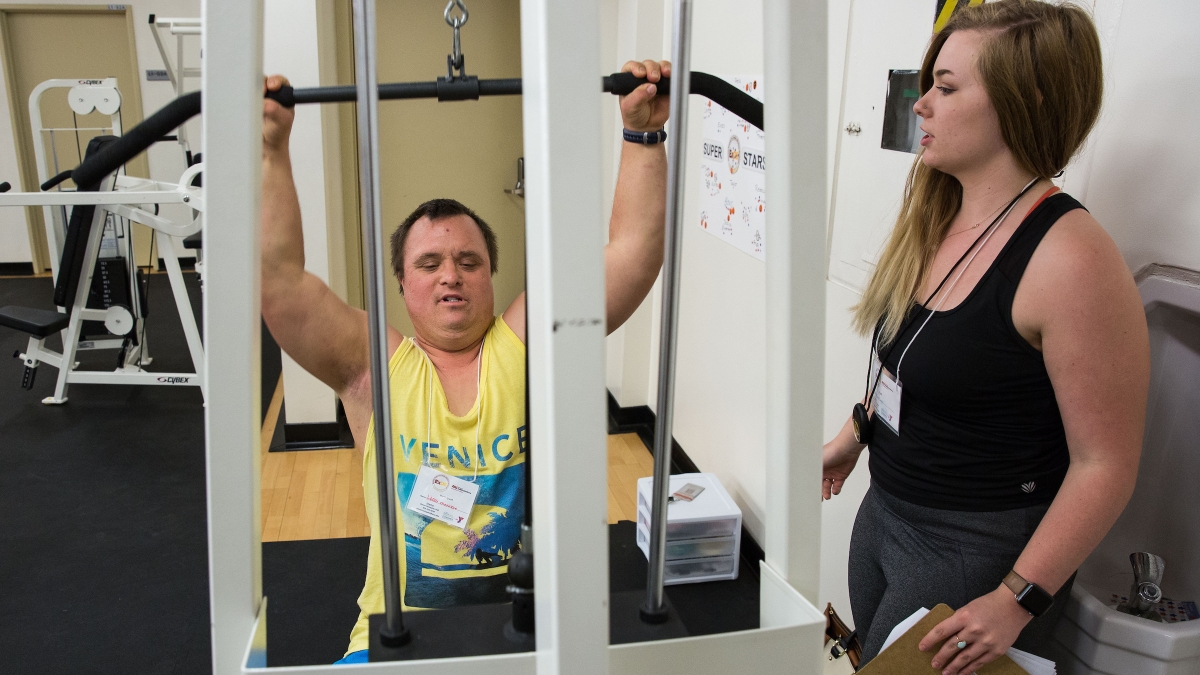
Top 40 hits blast from the speakers as Haley Santiago and Larry Merville pass a basketball back and forth across the wooden floor of a basement workout room at the Lincoln Family YMCA on ASU’s Downtown Phoenix campus.
They finish the set and Santiago asks, “How’d that feel?”
“Good!” Merville replies, giving her a high five.
Off in a corner, Trevor Weinstock kneels at the feet of Marcus SanTellan, holding his red and black adidas sneakers against the floor as SanTellan lifts his torso up toward his legs, then lowers it back down to the ground.
“C’mon Marcus, you got this,” Weinstock tells him.
On the surface, this scene seems like any other afternoon at the Y — except that Santiago and Weinstock are College of Health Solutions students at Arizona State University and Merville and SanTellan have Down syndrome.
The class is part of ASU Clinical Assistant Professor Simon Holzapfel’s Exercise Program for Adults with Down Syndrome, or ExDS for short.
Holzapfel said he created the free program, which officially launched in August, because there was a need among the Down syndrome community.
“Adults with Down syndrome are usually very inactive, and on average they don’t engage in enough physical activity compared to what is recommended … and they’re also at a very high risk for dementia and Alzheimer’s disease as they age,” he said. “So through physical activity, we hope to at least delay some of those age-related declines.”
Video by Deanna Dent/ASU Now
Holzapfel’s interest in working with special populations was sparked when he volunteered for a program called Kentucky Adaptive Physical Education while working on his master’s degree. Once a week, he would provide a physical activity program for people with varying types of disabilities.
Soon after, he heard about the work of ASU Associate Professor Shannon Ringenbach, who was conducting research on the effects of exercise on cognitive function in people with Down syndrome. Holzapfel made the decision to come to ASU to for his PhD and joined Ringenbach’s research team.
During that time, as he got to know members of the Down syndrome community, he realized there weren’t many effective exercise opportunities for them.
“I wanted to offer something more permanent, appropriate and purposeful,” Holzapfel said.
He thinks of ExDS as killing not two, but three birds with one stone: community engagement, hands-on learning and research opportunities.
“We’re doing the community exercise program to benefit our members in the community with Down syndrome, students are benefiting due to the didactic class aspect of it, and then there’s the research aspect of it, which will hopefully show other people through publications in the future that this kind of program can work and can be effective,” he said.
Aside from the physical benefits the program provides, there are social benefits for both the participants and the ASU students. They are paired up based on their schedules, and after getting to know each other, the students tailor the participants’ workout routines to their individual interests and preferences.
“That social interaction is very important for emotional health and well-being, and it kind of gets those adults with Down syndrome out into the community,” Holzapfel said.
Karl Truscott, Merville’s stepfather, said the program helps him to be more independent.
A former Special Olympics athlete, Merville is growing in confidence, now living with his sister and working as a dishwasher at the Pointe Hilton to help her with rent. His favorite sport is basketball, so his exercise partner Santiago tries to incorporate the sport into their exercise routines, which they perform together.
“I customize a program especially for [my participants], but I like to change it up, too,” Santiago said. “As long as they’re having fun and they’re exercising.”
Holzapfel plans to keep the program going indefinitely, offering it every semester for the foreseeable future. He also wants to expand it to include a nutritional aspect, helping participants with diet and weight-loss goals while also incorporating students from ASU’s nutrition program.
Overall, he wants to make a difference for an underserved population.
“I hope to make a little dent in terms of making society more inclusive of people with disabilities, and shaping students into more-inclusive fitness professionals when they go out and start working,” he said.
More Health and medicine
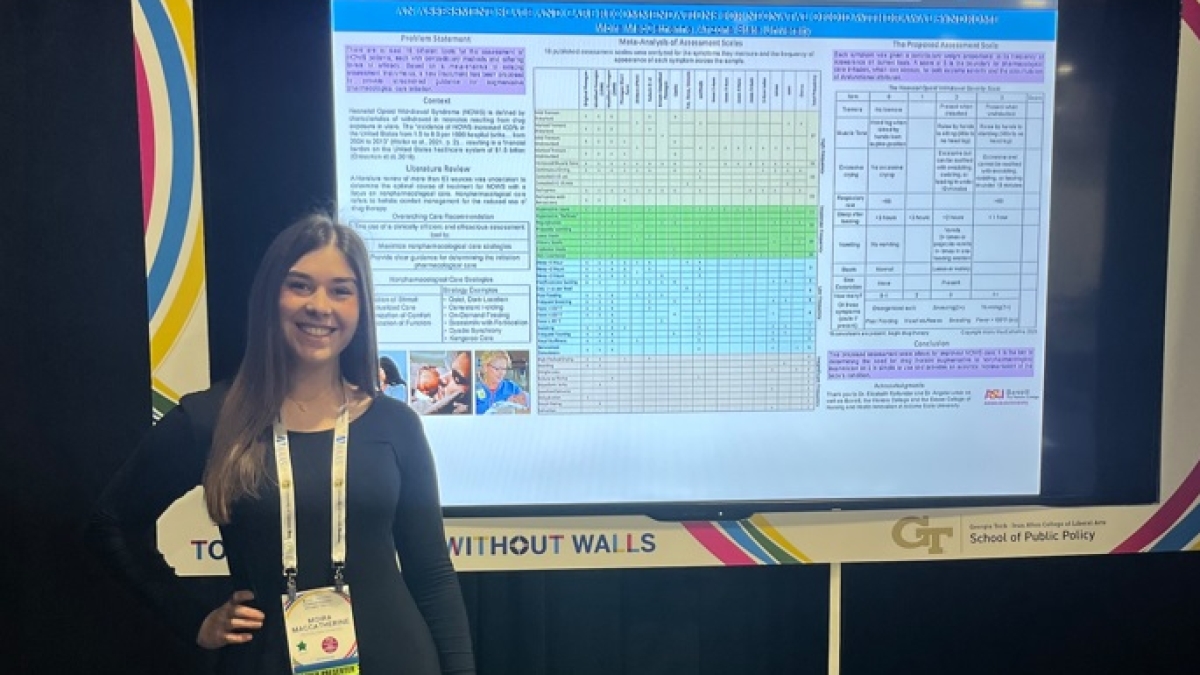
Nursing student wins top award for research on neonatal opioid withdrawal
An experience Moira MacCatherine had as a teenager volunteering in a Level III neonatal intensive care unit impacted her in such a way that it would later inspire her research as a nursing major at…

College of Health Solutions course to explore science behind longevity, well-being
Arizona State University’s College of Health Solutions has responded to the surge in interest in blue zones — those rare communities where some of the oldest people on Earth reside — with a new, self…
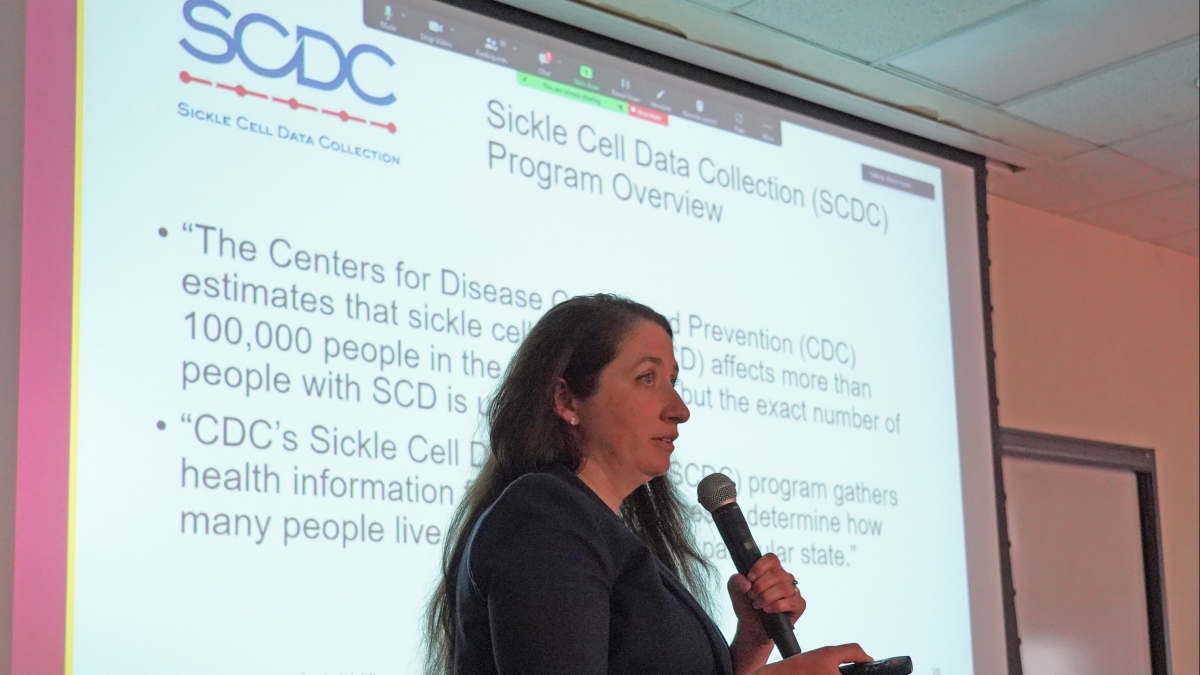
ASU center hosts community gathering to discuss latest health research
Communication and collaboration were front and center as Arizona State University’s Center for Health Information and Research, or CHiR, met with community partners and other stakeholders on April 3…
